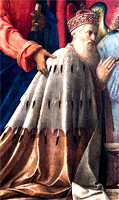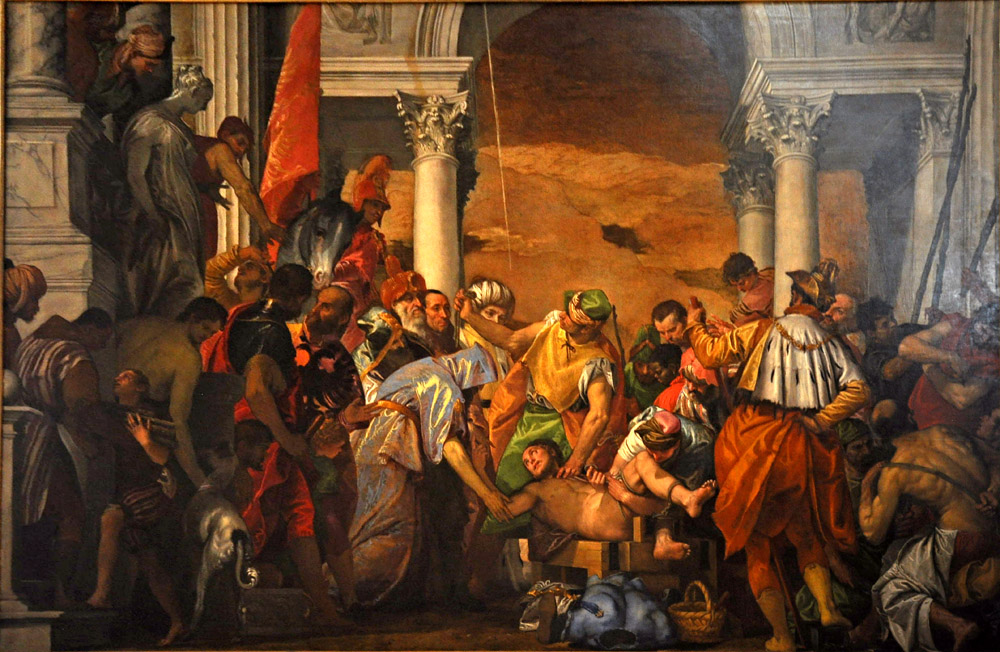
Paolo Veronese, The Martyrdom of St. Lawrence

1565
Oil on canvas
Church of St. Sebastian, Venice, Italy
This painting de-emphasizes the gridiron that is often dramatically presented in images of Lawrence's martyrdom and instead emphasizes what Christian martyrs are up against. The white hood on the man reaching down to Lawrence identifies him as a pagan priest, and by his gesture one assumes he is urging the saint to recant. The priest is part of a strong horizontal that begins with the stone idol on the right. The priest and idol represent the pagan culture that the saint rejects.

But the painting also expresses a political rejection of more universal relevance. The horizontal line continues through Lawrence's raised foot to the man in the ermine cape. Ermine is a mark of royalty, and an ermine cape was part of the Doge's ceremonial garb, as at right. But by attending at the Lawrence's murder, and also by rudely exposing his breeches to the viewer, the fellow exposes the disease at the root of wealth and power. As Lawrence declares in his colloquy with the Roman prefect:
Any of your great men, who make a brave show in dress and features, I shall prove feebler than any of my poor men. Here is one who vaunts himself in his silk and is puffed up with pride as he rides in his chariot, but a watery dropsy of the soul within distends him with its transparent poison. And here is another who in his greed crooks his hands and draws them close, his palm doubled, his finger-nails like hooks, and cannot relax the tendons. This other is dragged by foul lust among public harlots and polluted with mire and filth as he goes a-begging after dirty whorings. And he there, who seeks hotly for advancement and burns with thirst for rank, is he not panting with fevers underneath and maddened by the fire in his veins?Prudentius, Peristephanon, II, 205-252

Additionally, the artist broadens this condemnation to include the three great powers against which the city of Venice was struggling at the time. The red banner in the upper left bears the double-headed eagle of the Holy Roman Empire. The balding man glimpsed behind the ermine cape has the fleur-de-lis on his shoulder, symbol of France. And the turban in the exact center of the painting can represent the Ottoman Empire. The painting thus identifies Christian virtue with the specifically republican virtue at the center of the Venetians' self-image.
View this image in full resolution.
Read more about images of St. Lawrence.
Photographed at the church by Richard Stracke, shared under Attribution-NonCommercial-ShareAlike license.